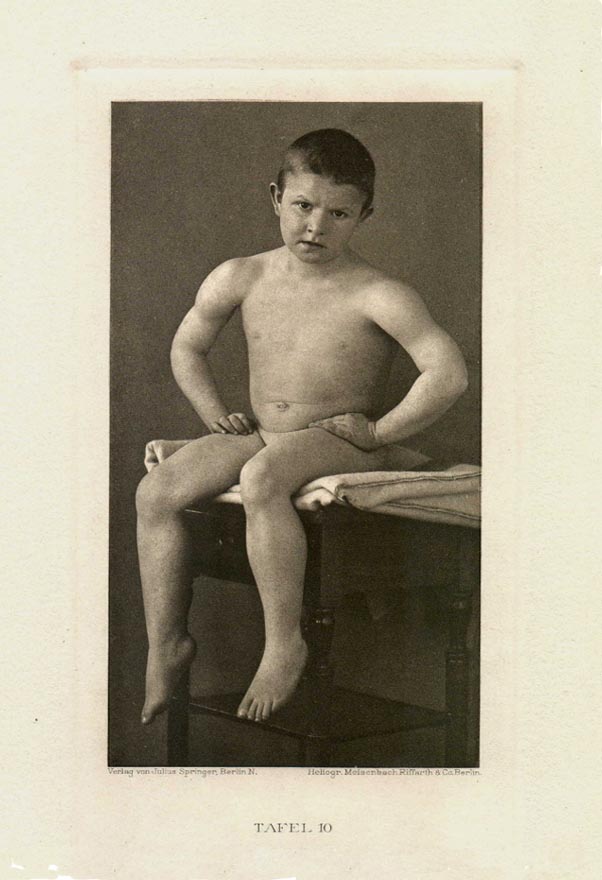

An excellent example of exceptionally pervasive pseudohypertrophy of the muscles. 11 year old boy. Both parents and all (6) siblings are healthy. No provable etiology. Up to the 6th year apparently well and ambulatory, nevertheless the boy could never run.
Commencing from between 6 and 7 years on, an increasing debility of the legs, and also in the arms soon thereafter. By 10 years walking is only possible with two crutches and only after hoisting up with the arms to an upright stance. By the time of the photographing (September 1893), motility is diminished overall. Furthermore, the child has become incapable of stooping or standing by himself.
Of the muscles apparently entirely unaffected, each of the facials, as well as the hand and foot muscles.
Pseudohypertrophic and paretic are: both sides deltoideus, triceps, almost all the forearm muscles, the long back muscles, the glutean and the abdomen muscles, as well as more or less significantly the entire musculature of the upper and lower shanks. Both sides (right more severely than the left) being of spastic equinus contracture.
Pseudohypertrophic and yet tolerably functional are the small shoulder muscles.
Atrophic-paretic: both mm.sternokleidomastoid., pectoral. minor and major, biceps and brachialis internus, cucullaris and serratus. Sinew reflexes extinguished. Bladder and rectum normal. Senses and tactile reflexes unchanged. Skin of the legs and the torso blueish and marbled red. Electrical stimulation of parts substantially reduced, parts extinguished. Degenerative reaction nowhere.
